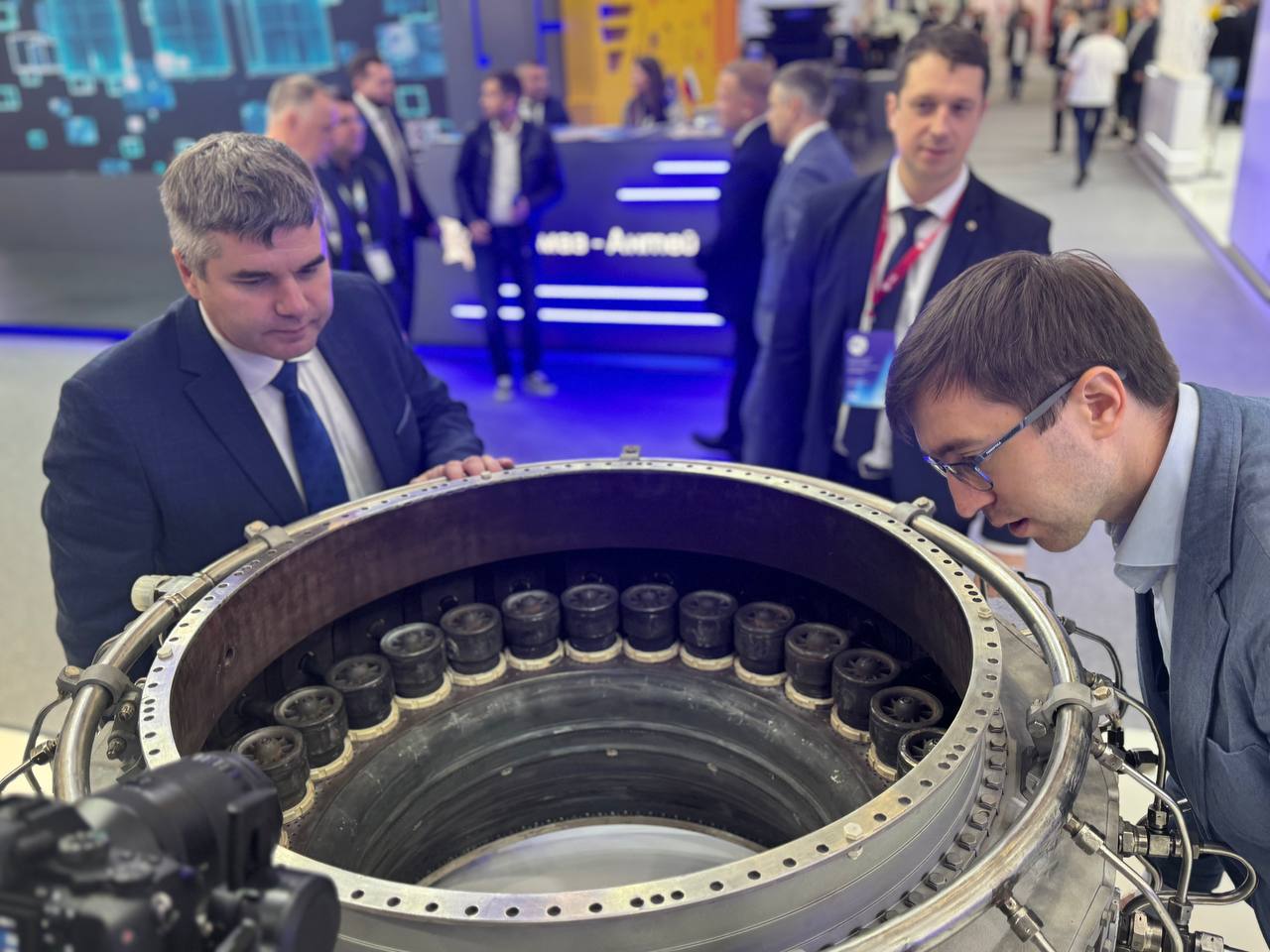Scientists from Samara University assisted in creating the first Russian gas-turbine engine with its capacity of 32 MW, designed for transporting gas.
A prototype of the NK-36ST-32 engine, created in Samara at the UEC-Kuznetsov enterprise, was presented at the 14th Saint Petersburg International Gas Forum. The engine is based on the NK-36ST-25 serial engine with its capacity of 25 MW by using modern technologies and solutions.

Scientists and engineers from Samara University took part in the project work. Earlier, with the support of Russia’s Ministry of Science and Higher Education, UEC-Kuznetsov PJSC and Samara University organized a high-tech production of complex-configuration parts for industrial gas-turbine engines by using 3D printing. The University’s scientists and engineers developed and manufactured on a 3D printer high-efficiency burners for the low-emission combustion chamber of the new engine. The total set includes 28 burners per combustion chamber. So far, they have signed the contract for 6 such sets, with 2 of them to have been shipped.
Because of innovative developments, the NK-36ST-32 engine has turned out to be very eco-friendly and meets all necessary standards. According to the Rostec State Corporation, the new engine also has enhanced power and high energy conversion efficiency – 38 %, and surpasses all Russian gas turbine engines for transporting gas through main gas pipelines. Moreover, the NK-36ST-32 engine has a reduced fuel consumption per unit of power and the high assigned operating time – 120,000 hours.
“This is the first successful industrial history of introducing engineering developments in the field of additive technologies into gas-turbine installations, resulting in new functional specifications of gas-turbine technology. At present, Samara University is a powerful scientific and production site, on the basis of which a complete chain from designing to testing promising samples of gas-turbine technology, in particular parts of the hot section of gas-turbine engines, is implemented”, noted Vitaly Smelov, Director of the Institute of Engines and Power Plant Engineering, Head of Samara University’s Cyber-physical Factory of Small-Sized Gas-Turbine Engines.
For reference:
Earlier, Samara University developed and successfully tested a comprehensive standard technology for additively manufacturing of parts and assemblies of the hot section of industrial gas-turbine engines. The funds for the project were allocated by Resolution No. 218 of the Government of the Russian Federation.
The technology includes the processes of selective laser fusion, direct laser growth, as well as thermal and mechanical processing. The technology was tested on five types of parts of the low-emission combustion chamber: a burner device, outer and inner casings of the combustion chamber, as well as outer and inner rings of the pre-swirl system.
Besides the direct development testing of technological processes, scientists also created a smart system of design and technological preparation of production, which, due to digital technologies, links together all the stages of product creation - from the designer’s idea to its embodiment in metal. The methodology of digital organizational design and technological preparation of additive production was also developed. All these developments were transferred to the University’s industrial partner, UEC-Kuznetsov PJSC.
 RU
RU  EN
EN  CN
CN  ES
ES 